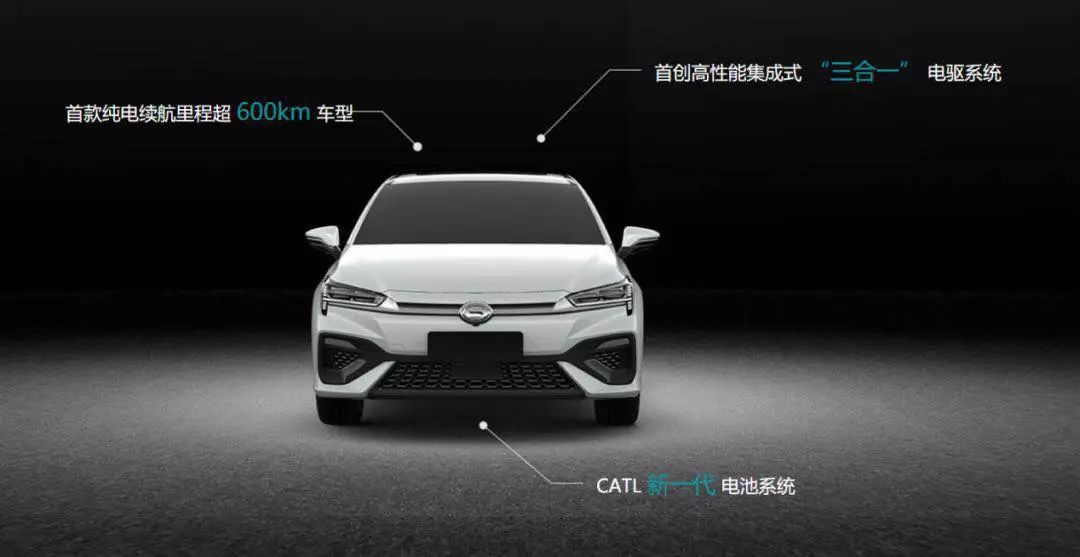A friend who had just bought an electric car immersed himself in the joy of picking it up, but soon began to complain to me:
Electric cars are a rip-off! They say it can go 500 km, but it’s hard to even make it to 300 km!
Oh, another victim of the constant speed cruising promotion.
I don’t know when it started, but constant speed cruising range has become a selling point in car advertisements and has even been directly incorporated into car names. In recent years, the pure electric car range has been continuously increasing. However, more and more consumers feel deceived by manufacturers. My curiosity prompted me to urgently find out who put constant speed cruising range on the stage and started the performance.
But don’t worry, before we begin this article, I think it is necessary to first explain what is constant speed cruising range, maximum range, and standard range. Let’s start with a coordinate graph that shows the range of a Tesla Model S 100D as an example:
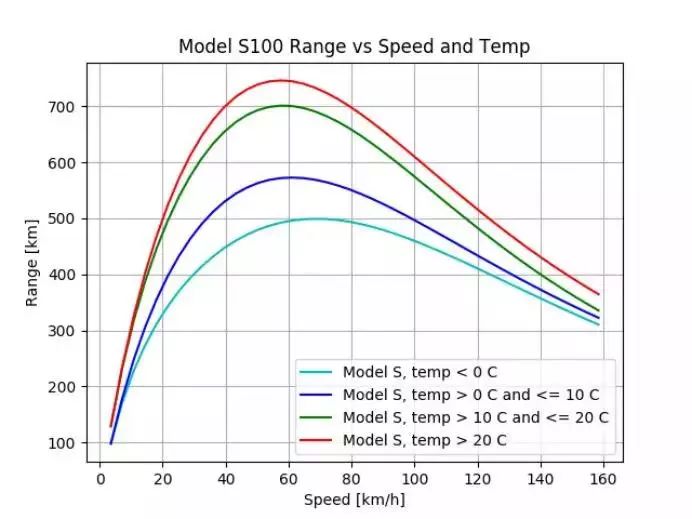
It’s easy to see that the highest point of each curve appears near 60 km/h, which means that no matter what temperature conditions, the longest range can be achieved at a constant speed of 60 km/h. Constant speed cruising range, as the name suggests, is the ability to continue driving at a constant speed. By keeping the speed around 60 km/h, the maximum range, or maximum range, can be obtained.
Obviously, constant speed cruising range or maximum range are far from our actual use.
Who was the first to give it a try?
After a comparison and investigation, the final target was locked onto Roewe. Roewe’s first pure electric car, the e50, was launched in 2015, and underwent a redesign in April 2016, which led it down the path of constant speed cruising.
The following screenshots are news reports about the Roewe e50 in 2016:




Most consumers may assume that the e50 has a range of 220 kilometers based on the title. However, if you think so, congratulations, you have been deceived. The working range of the revamped Roewe e50 model is only 170 kilometers. According to the “Announcement on the Preliminary Examination of the Application for Subsidy Funds for the Promotion and Application of New Energy Vehicles in 2016” released by the Ministry of Industry and Information Technology in May 2017, the application for 103 CSA7001BEV models (i.e. Roewe e50) by SAIC Passenger Cars was rejected for failure to meet the national subsidy requirements for the range that a fully charged electric passenger car can travel. Based on the subsidy policy for new energy vehicles that year, the 45,000 yuan subsidy applied to pure electric vehicles with a range of 150-250 kilometers. Therefore, the actual range of Roewe e50 is less than 150 kilometers.
However, in the “Announcement on the Preliminary Examination of Subsidy Funds for the Promotion and Application of New Energy Vehicles in 2016 (Second Batch)” released by the Ministry of Industry and Information Technology on November 28, 2017, the application for 136 CSA7001BEV models by SAIC Passenger Cars was approved, and the working range of Roewe e50 was finally determined to be 170 kilometers by the Ministry of Industry and Information Technology.


In 2016, a total of 1494 Roewe e50s were sold, while the national sales of pure electric vehicles in that year were 409,000. Although the sales performance of the e50 is not excellent, as the first pure electric car of SAIC, it has shown more possibilities for Roewe, and more importantly, it has taught more manufacturers new promotional tactics.
Who is following suit?
Roewe’s amazing operation surprised many manufacturers. It turns out that range promotion for electric vehicles can be done in this way. Although there is suspicion of deceiving consumers, in the face of interests, there is no shortage of followers for promoting equal speed range or exaggerated range. As more and more manufacturers start to operate in this way, even manufacturers who initially insisted on principles began to worry about falling behind and resort to “going against their principles”.
So who is following suit?
- Naming based on equal speed range (or exaggerated range):
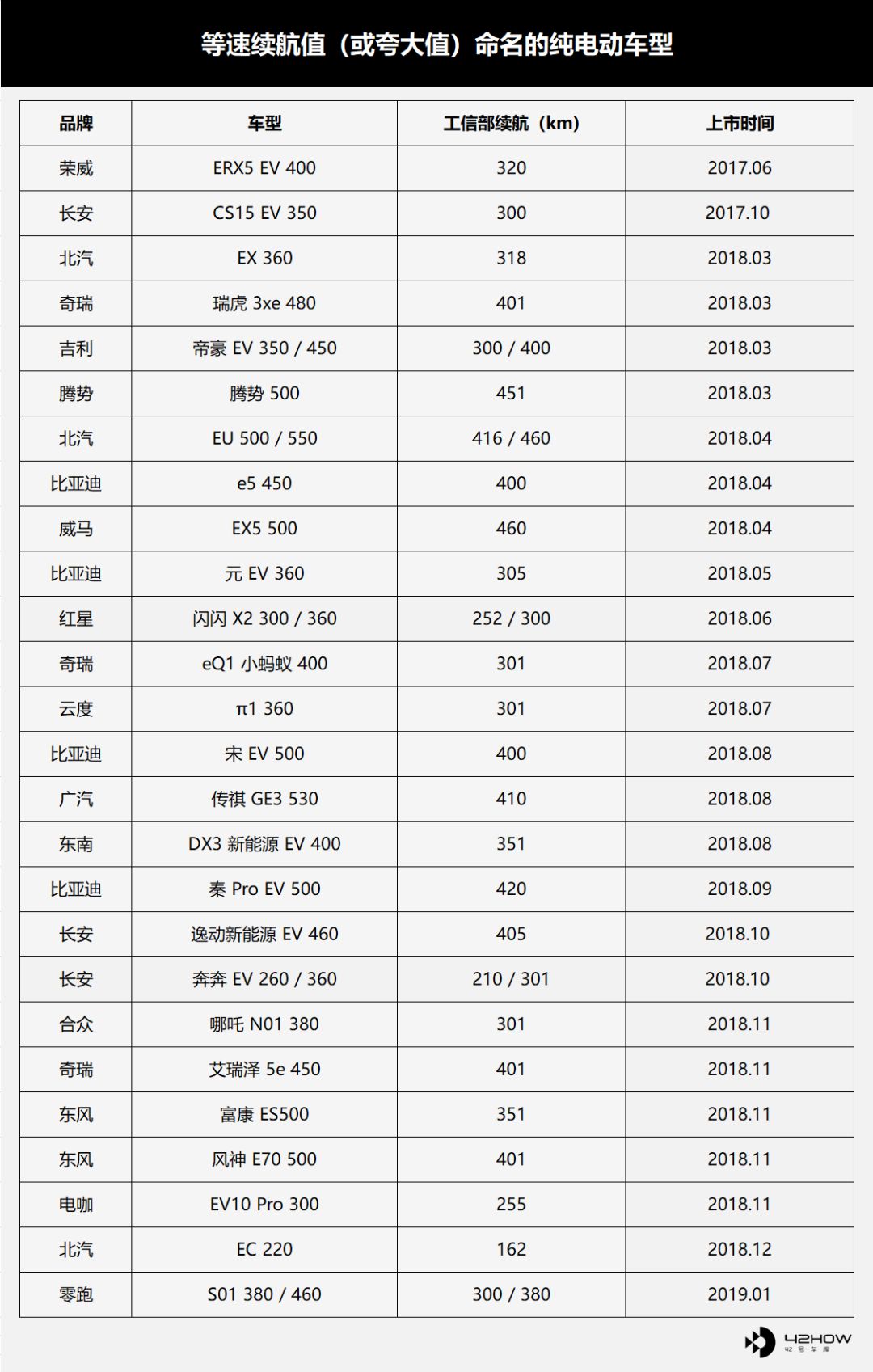
Most of China’s mainstream electric vehicle manufacturers are no exception, and there are also several new forces of carmakers. The most interesting of them is BAIC. Its EX model was called EX200 in 2016, with a range of 200 kilometers according to the Ministry of Industry and Information Technology; in 2017, it was renamed as EX260 with a range of 250 kilometers according to the Ministry of Industry and Information Technology (it may be understood that 250 is difficult to hear and 10 has been added); in 2018, it was called EX360 with a range of 318 kilometers, directly exaggerating the value by 42.
And its EC model is even more interesting. In 2017, the range of EC200 was 162 kilometers, and the range of the 2018 model was still 162 kilometers, with no changes in battery or motor, but the name was changed to EC220. The road to “learning bad” by BAIC was vividly shown through these two models.
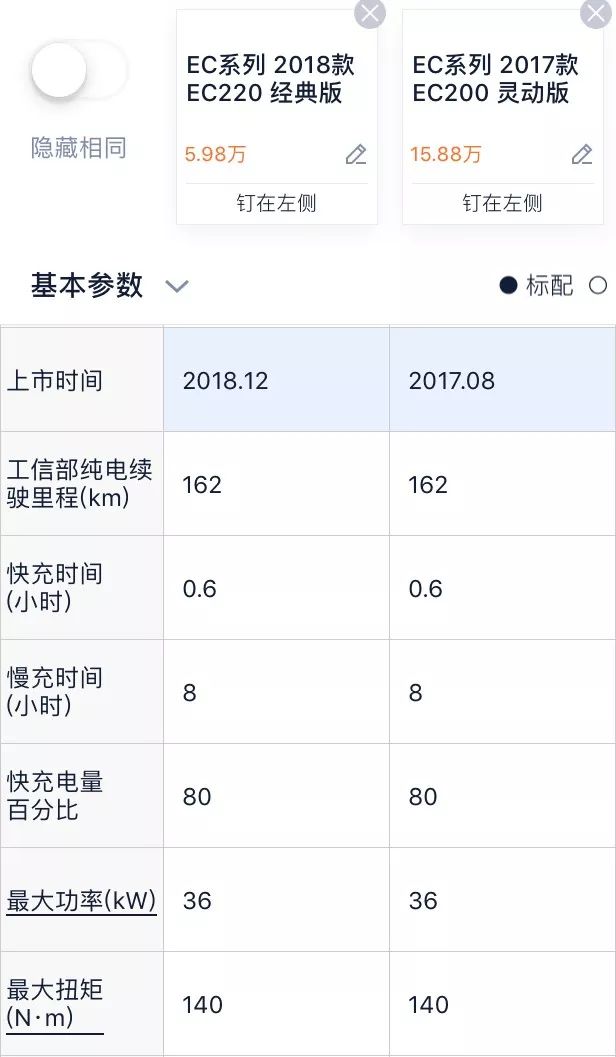
- Promote using constant speed range values externally
In addition to naming after constant speed range directly, there is also a group that looks a bit more implicit, such as the Roewe E50 mentioned earlier. It is still a rogue behavior to promote constant speed range extensively without naming it as such.
The inventor of constant speed range promotion re-invented constant speed range. When you open the Roewe official website, you will find that Marvel X is claimed to have a range of 500 kilometers in all its publicity about range, but in fact, the Range of the rear-wheel-drive version of Marvel X by the Ministry of Industry and Information Technology is only 403 kilometers, and the four-wheel-drive version is only 370 kilometers.

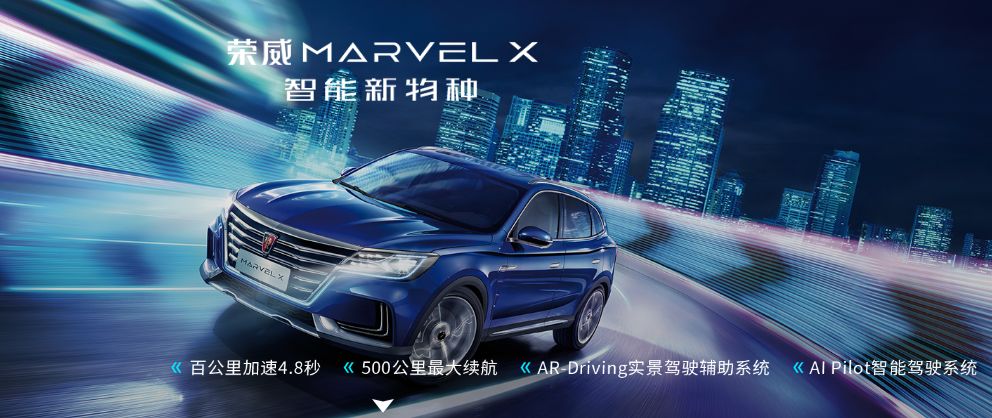
Maybe because constant speed range has been dissed too much recently, Roewe has some vigilance. At the beginning of the new year, when the new Ei5 was launched, Roewe directly came up with an advertisement titled “The longest real range, focusing on real range, and creating the best usage quality”. Well, you promote constant speed range, and you promote real range. Do you dare to ask whether you are also a Gemini like the author?Hey, don’t rush to affirm the attitude shift of Roewe. By checking their official website, the interface of Ei5 still prominently displays the propaganda of 570km range, although the 420km range certified by MIIT is among a relatively outstanding level and there’s no need to mislead consumers just for this difference of over one hundred.
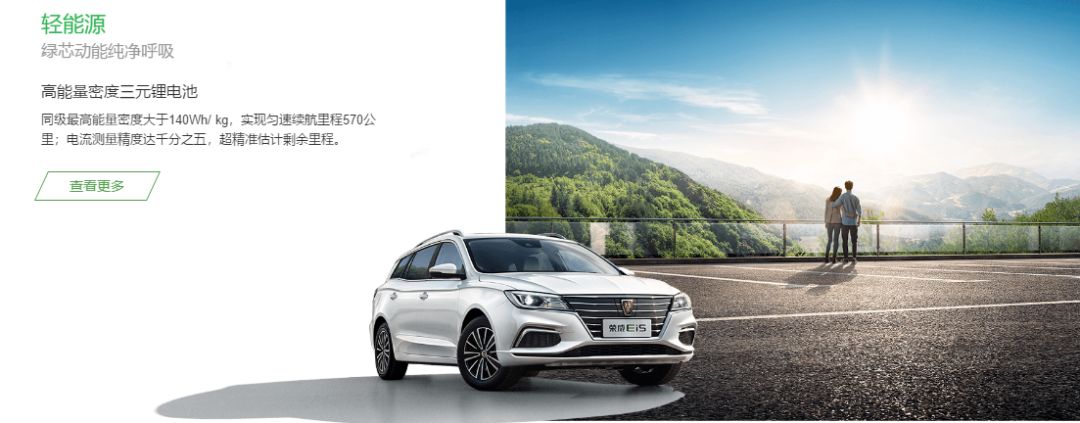
BYD’s Tang EV 600, launched at the annual Guangzhou Auto Show, belongs to the type named “constant speed range”, but they didn’t forget to promote it heavily using this concept. For instance, in the official promotional poster below, “Range: 600 km at 60km/h constant speed” is displayed, while the MIIT range is not mentioned at all.

GAC unveiled Aion S with a label of “the first pure electric model with a range of over 600 km” on its promotional poster, and the 600-km result was obtained by constant speed testing too, though GAC didn’t specify it.

The new forces in the automobile industry that are pioneering to some extent are relatively honest. They only mentioned constant speed range briefly during the launch event, but checking the introduction page of G3 on Xpeng’s official website, you can still find that the range is described by constant speed endurance. However, a remark is added to alleviate the harm.
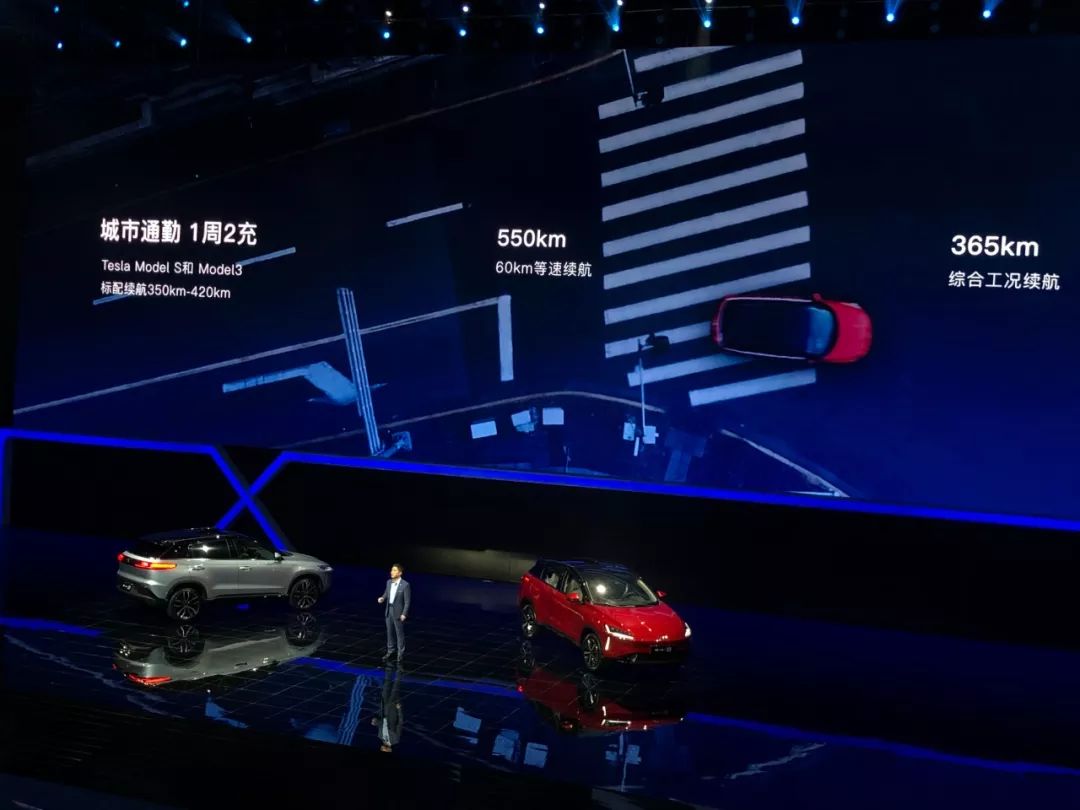
Who can wade through without getting mired?There are various factors that can affect the range of a pure electric vehicle. Typically, the longest range can be achieved when driving at a constant speed of around 60 km/h. As the speed increases, the range decreases. Additionally, other factors such as wheel size, temperature, and air conditioning can have a direct impact on the range. Therefore, it is necessary to take into account all the significant factors that affect the range to estimate a relatively accurate range.
It is worth mentioning Tesla, which is the first automaker to provide a range calculator for electric vehicles. The range displayed on Tesla’s website is not based on a maximum range, but rather calculated based on the factors selected by the user. It is worth noting that the range calculator on Tesla’s official website in China is calculated based on the measurements of the Ministry of Industry and Information Technology of the People’s Republic of China (MIIT), and the maximum range displayed refers to the approximate range of the vehicle under the given conditions, rather than the maximum range achieved when controlling all variables.
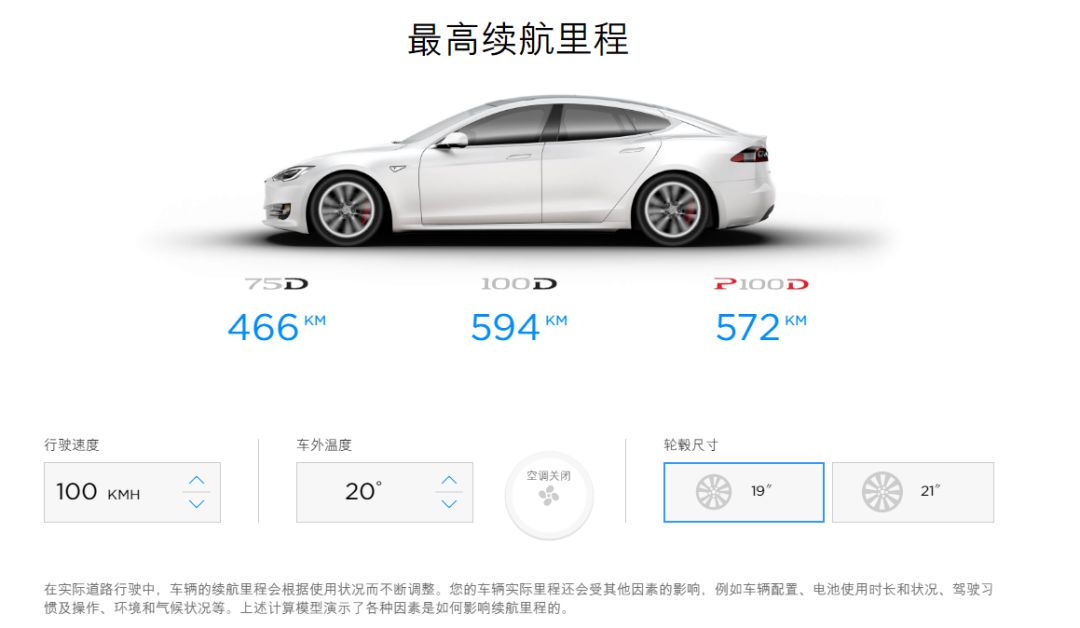
What is the range of a Tesla at a constant speed of 60 km/h? Unfortunately, the range calculator on Tesla’s website has a lower limit of 70 km/h. However, when selecting 70 km/h, 20 degrees Celsius, air conditioning off, and 19-inch wheels, the range of a Model S 100D is 849 km. You may be curious about how other products that claimed to have a longer range than Tesla are compared.
“In terms of range, Tesla has always been a leader. Now, we have to give the title to GAC New Energy, because the range of the Aion S has far surpassed the Tesla Model 3 (maximum range of 346 km) and even exceeded Tesla Model S 100D’s maximum range of 579 km.”
This statement is from the official WeChat account of GAC New Energy, which compares the MIIT range of Model S with the 60 km/h constant-speed range of its own Aion S, and says boastfully that they have won. However, the comparison used the wrong EPA range of Model 3 (currently the lowest range of Model 3 in production, the range of the mid-range version in EPA is 264 miles, which is approximately 425 km).
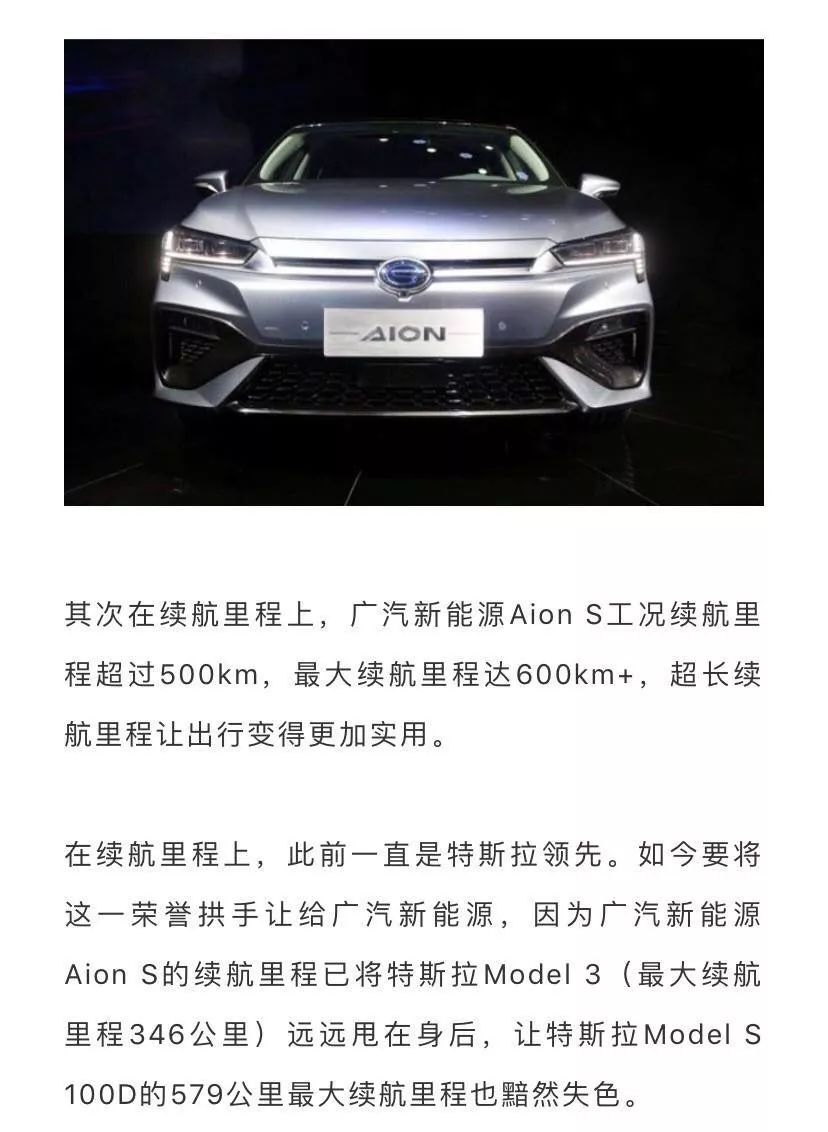 Apart from Tesla, we have seen more automakers introducing mileage calculators, such as NIO. NIO’s official website displays both the maximum cruising range and the NEDC comprehensive cruising range, and also provides a mileage calculator, which is a more comprehensive labeling method.
Apart from Tesla, we have seen more automakers introducing mileage calculators, such as NIO. NIO’s official website displays both the maximum cruising range and the NEDC comprehensive cruising range, and also provides a mileage calculator, which is a more comprehensive labeling method.
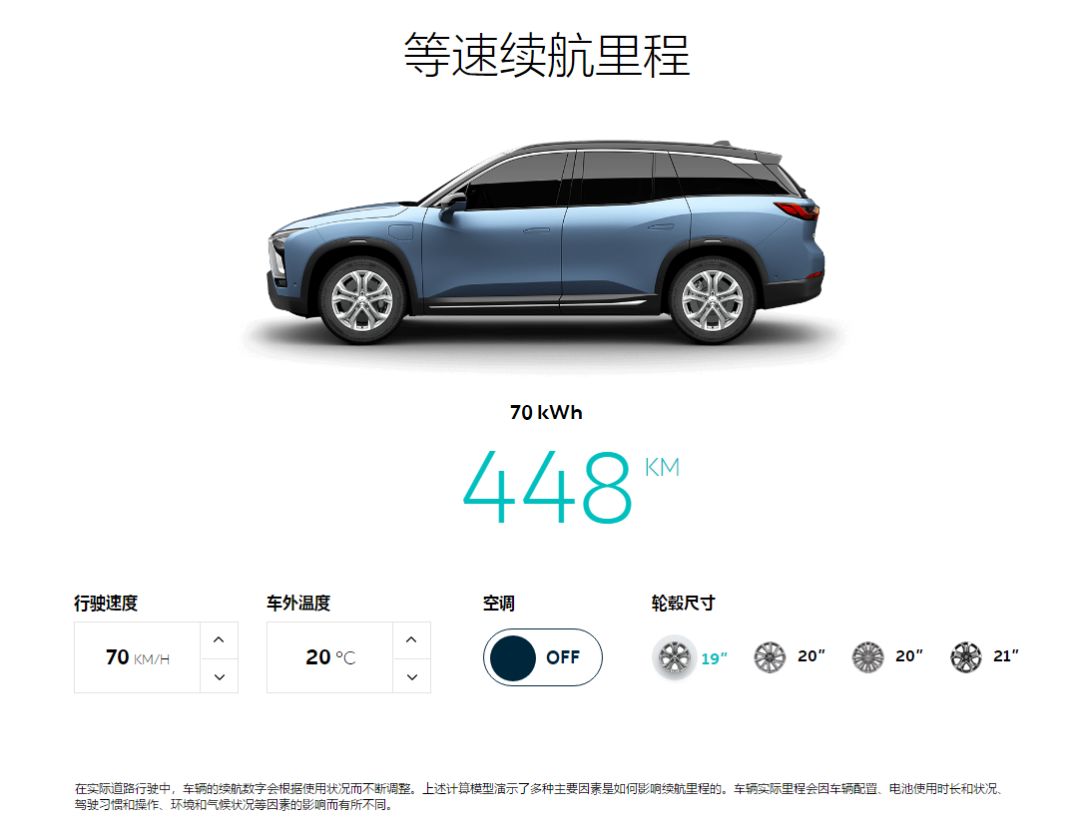
Besides NIO, XPeng, a Chinese imitation of Tesla, has also set up a mileage calculator on its official website. However, as mentioned above, the labeling on the interface before entering the mileage calculator is still the numerical value of constant speed cruising.
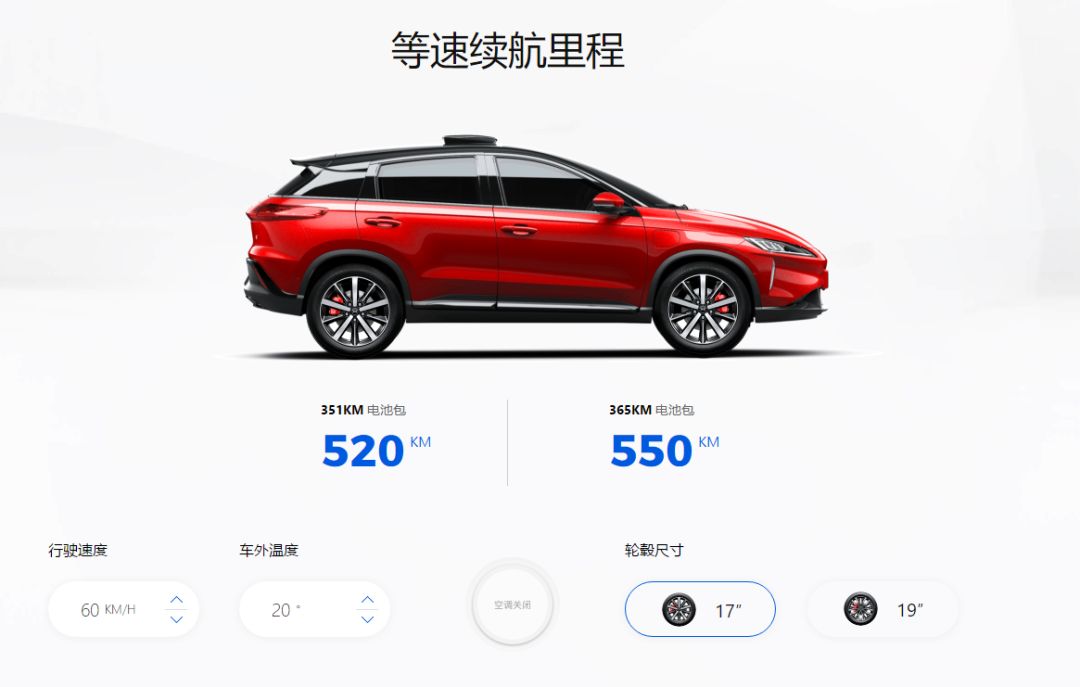
Actually, there are also some brands outside of the ones using mileage calculators who stick to the bottom line, and they use the endurance values of the Ministry of Industry and Information Technology both in car names and official publicity. Although using the comprehensive work condition values among the crowd of constant speed endurance values seems a bit poor, it does provide consumers with a real reference of the endurance level.
Why is constant speed endurance promotion considered a deception
The value of constant speed cruising exists objectively and can indeed be achieved, but is it deceptive to promote it as the maximum or constant-speed endurance? I believe it is. The manufacturer’s claim of the maximum or constant-speed cruising can be achieved, but multiple variables must be controlled to be stable at the most appropriate value. This is difficult for the vast majority, if not all, consumers. Therefore, this numerical value loses its reference value. The use of constant speed cruising to promote or label car names is essentially a subjective attempt to mislead consumers.
Academician Ouyang Minggao of the Chinese Academy of Sciences said at the just-concluded China Electric Vehicle Hundred People Summit:
The current cruising range has been generally increased from 150 kilometers to over 300 kilometers, but customer complaints have not decreased because the actual cruising range is lower than expected. As a user of electric cars myself, I deeply feel that the actual cruising range is very sensitive to temperature and driving style.
In fact, this is not the first time that he has mentioned the actual cruising range. Many electric vehicle industry experts and scholars, including Academician Ouyang, have mentioned the need to pay more attention to the actual cruising range and its influencing factors.Is the range of domestic brand electric vehicles poor? Not really. Last year, we saw more and more models with a range of over 400 kilometers, and even over 500 kilometers, certified by the Ministry of Industry and Information Technology (MIIT). Even for micro electric vehicles like Little Ant and Zotye E200, their MIIT certified range has exceeded 300 kilometers, and compared to foreign brands, the price of domestic pure electric vehicles is not expensive. However, various car companies have been competing to advertise constant speed range values, which makes consumers feel deceived and resentful toward the entire electric vehicle industry. This is not good for enterprises and the industry. As consumers become more rational and knowledgeable about products, promoting constant speed range to deceive people is no longer effective.
The popularity of advertising constant speed range is imitated by various brands, but the atmosphere of valuing actual range needs to be created by all manufacturers. The electric vehicle market needs those who are willing to stand out against the trend to correct the market atmosphere.
Please don’t boast about your constant speed range, when I can keep going forever even when going downhill!
How should electric vehicle range actually be measured?

 * Stop Making Fun of Baidu and Chinese Automakers Should Face the Gap to Make Progress
* Stop Making Fun of Baidu and Chinese Automakers Should Face the Gap to Make Progress

This article is a translation by ChatGPT of a Chinese report from 42HOW. If you have any questions about it, please email bd@42how.com.
